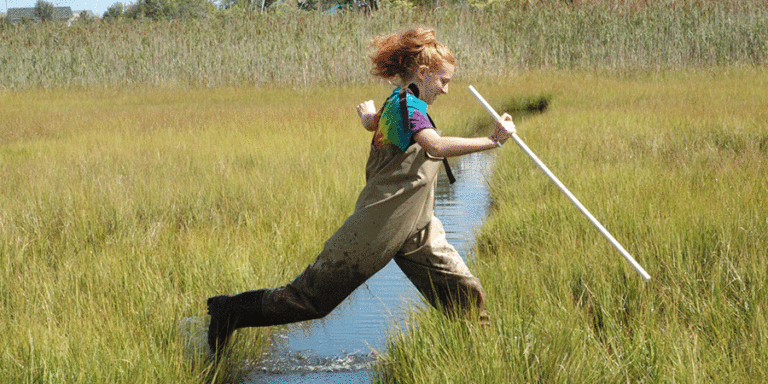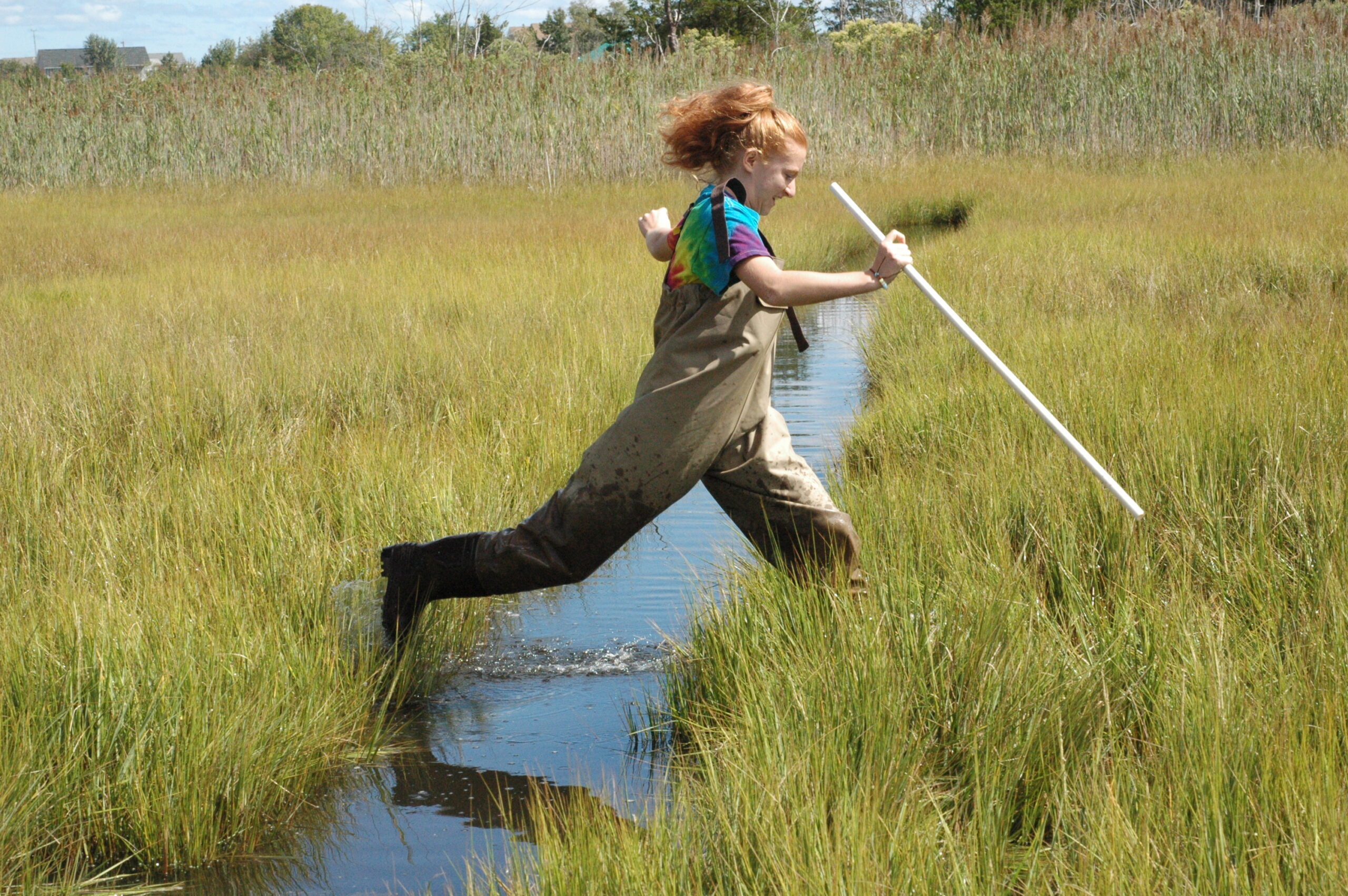
A lot has happened in the decade since the university with the dragons teamed up with the museum with the dinosaurs. After Drexel and the Academy of Natural Sciences signed an historic affiliation on Oct. 26, 2011, the two Philadelphia institutions pledged to combine their strengths to mutually expand their global scientific reputations and capabilities.
Since then, many Dragons have graduated from the joint academic department created by the partners, and countless researchers and visitors have enjoyed the expansion of the Academy’s historic and world-renowned collections. Philadelphia’s children and families have also benefited from their union through countless STEM programs, environmental programs and acts of ecological stewardship.
“When we formed this partnership 10 years ago,” says Drexel President John Fry, “we firmly believed that by working together, we could build on the Academy’s status as a world-class natural history museum that not only inspires people to value their connection to nature but also serves as an academic resource for those who care about environmental science and environmental policy. And we have far exceeded those high expectations.”
Now, entering a new decade into the partnership, the Academy is equipped to help professional and citizen scientists better understand, appreciate and support the natural world — and the timing is more important than ever.
“As we are poised to enter a new decade of partnerships with Drexel faculty, students and staff, we look forward to together building knowledge, engaging communities and inspiring solutions for a healthy planet,” says Academy President and CEO Scott Cooper. “Our affiliation strengthens our scientific research and empowers us to collaboratively address the environmental and climate challenges ahead.””
There’s a lot to celebrate, but these 10 achievements best honor and exemplify the power of the Drexel-Academy partnership.
#1 Busy, Busy BEES
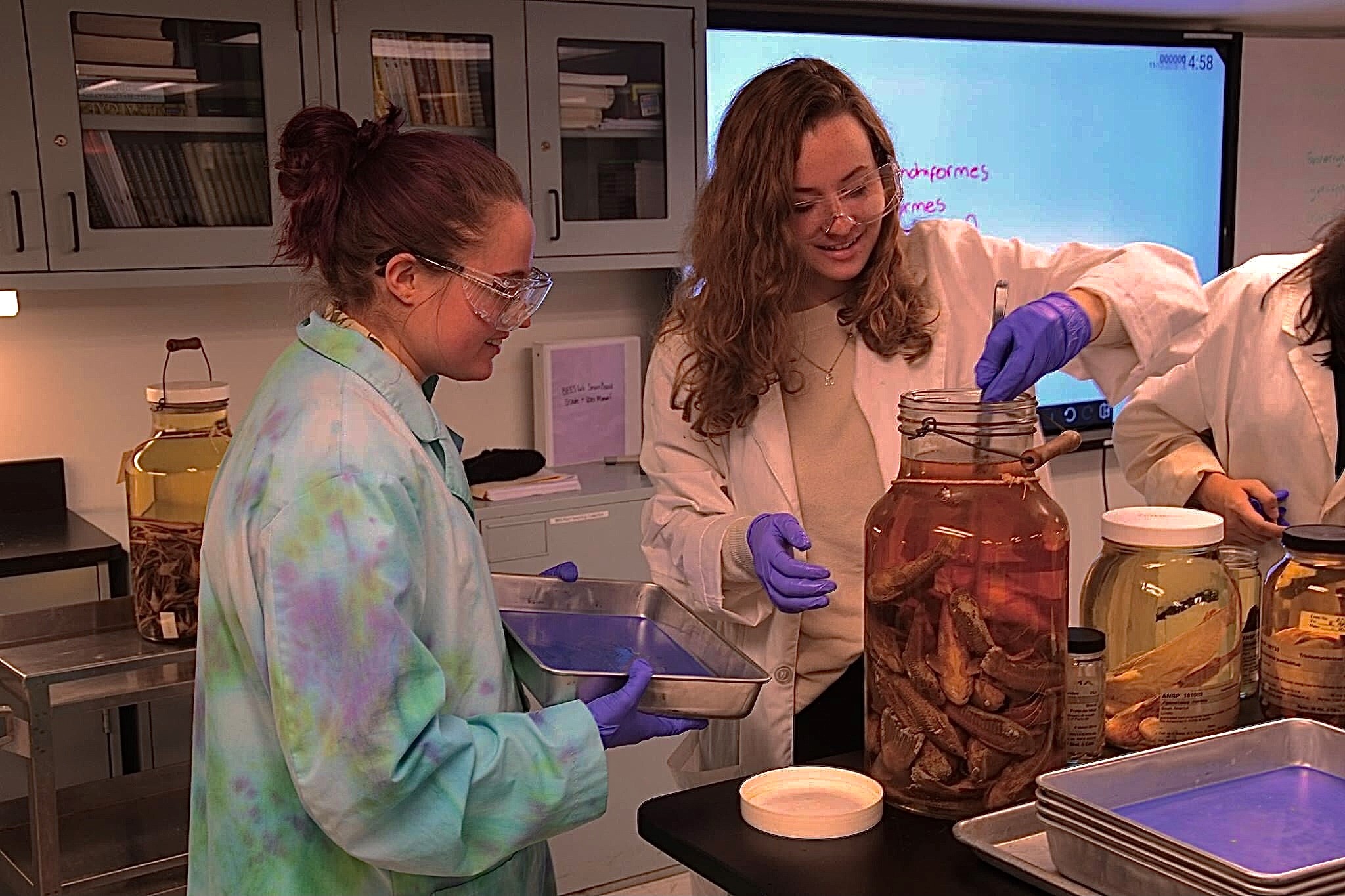
One of the most visible and exemplary examples of the Drexel-Academy partnership is the Department of Biodiversity, Earth and Environmental Science (BEES), which was spun off of Drexel’s biology department in 2012 with newly redesigned curricula. BEES students work and learn with Academy scientists — some of whom have become Drexel faculty and adjunct instructors — and tap into the Academy’s extensive natural science collections and community outreach programs.
“The Academy is a home away from home for the students in the BEES department,” says Academy Senior Scientist David Velinsky, who is also a BEES professor and department head. “They work with professors and Academy staff doing research in labs, work in the collections and take classes that focus on systematic biology, environmental science and ecology that they wouldn’t have in a traditional department. That’s what makes the affiliation a real gem.”
The academic cross-pollination between the College of Arts and Sciences and the Academy has really flowered: the cohort grew from about 30 undergraduate and graduate students to 178 this fall, and from one undergraduate degree (environmental science) to three (environmental science, geoscience and environmental studies and sustainability).
#2 New Ways to Research and Study the Art of Science
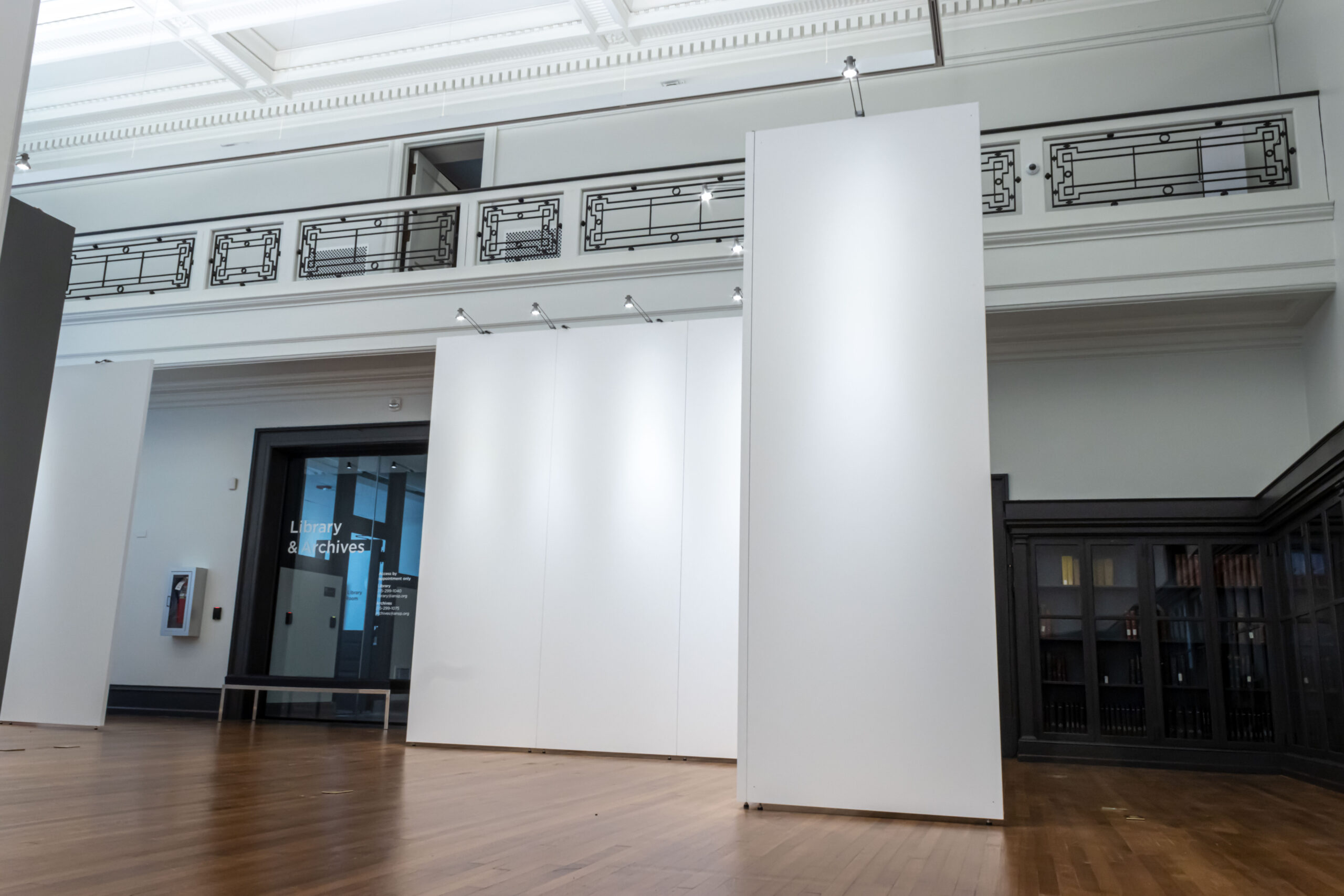
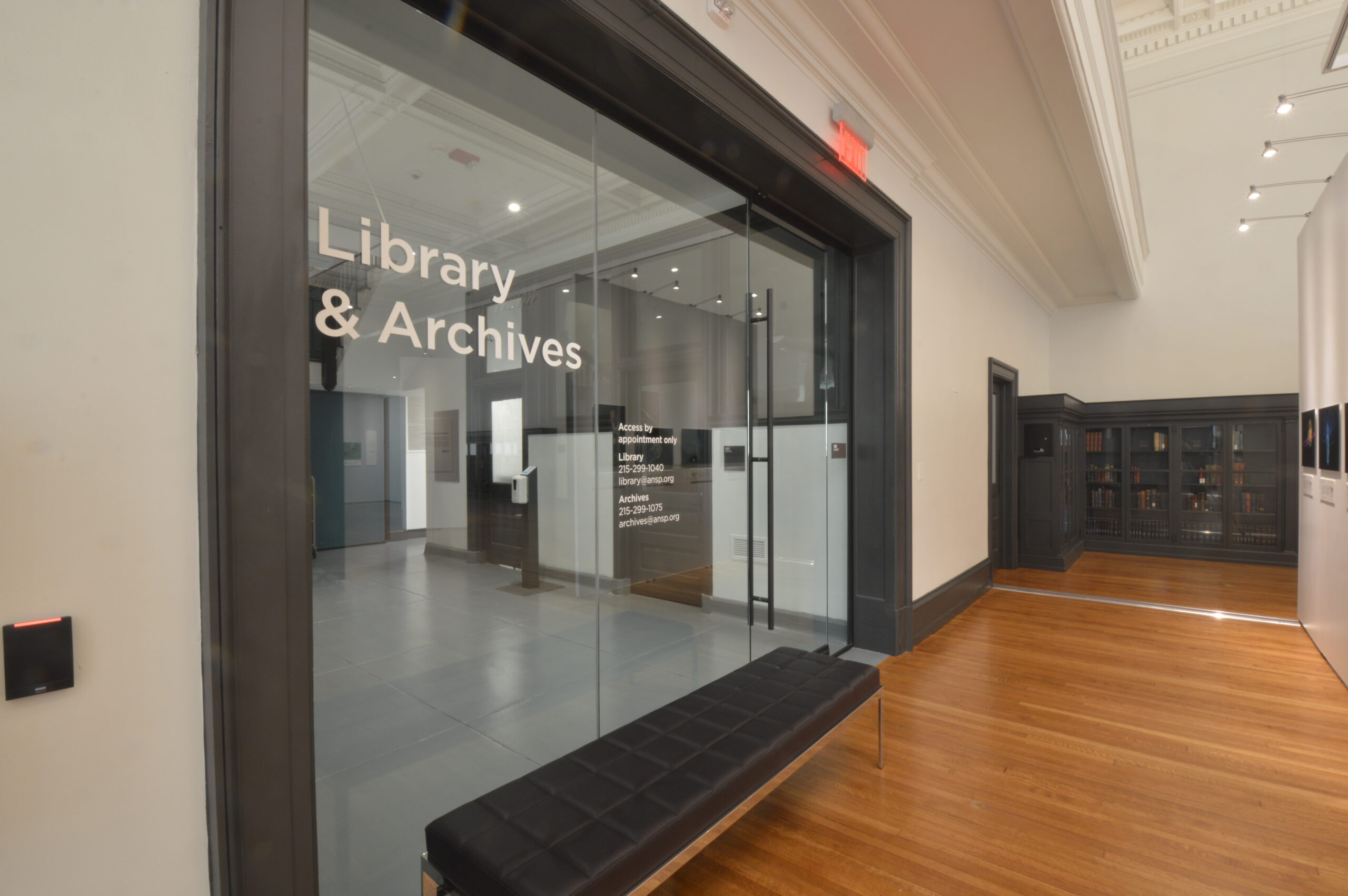
New gallery and archives space in the Academy. Credit John Hutelmyer.
One of the original goals of the affiliation was to make the Academy’s collections more accessible to both the public and researchers. Two major renovation goals completed just before the end of the decade helped meet that objective.
In 2017, construction began to convert the Academy’s 111-year-old Library Reading Room into the William B. Dietrich Gallery, which was completed last year.
The original 3,000-square-foot historic space was built in 1910 and previously housed the researchers, scientists and science lovers consulting the Academy’s world-renowned collection of rare books, papers, journals, photographs, art and artifacts.
The Dietrich Gallery is the first new gallery space created since the partnership was formed to be fully dedicated to exhibits and now displays rotating shows related to art and photography and those better suited as exhibits for adult visitors. Since opening in March 2020, the Dietrich Gallery has hosted two exhibits so far — Wildlife Photographer of the Year and Gideon Mendel: Drowning World — with a third, Invisible World of Water, set to debut in November.
As part of the Dietrich project, a fully modernized Library Research Center was recreated adjacent to the Dietrich Gallery for visitors to research and explore the Academy’s vast archival and library materials. New compactorized storage was created in both the Academy’s Archives and the newly created 750-square-foot McLean Wolf Rare Book Room, which also was outfitted with new climate controls to protect the precious rare books from humidity. The Morris Reading Room was also carved out and created during this process to continue the Academy’s tradition of providing a state-of-the-art space for people to access its books, art and archives.
Learn more about the history of the gallery and its renovation:
#3 Science Learning for All

A parent and child investigate a sinking and floating activity together during a Science and Literacy for Success program event.
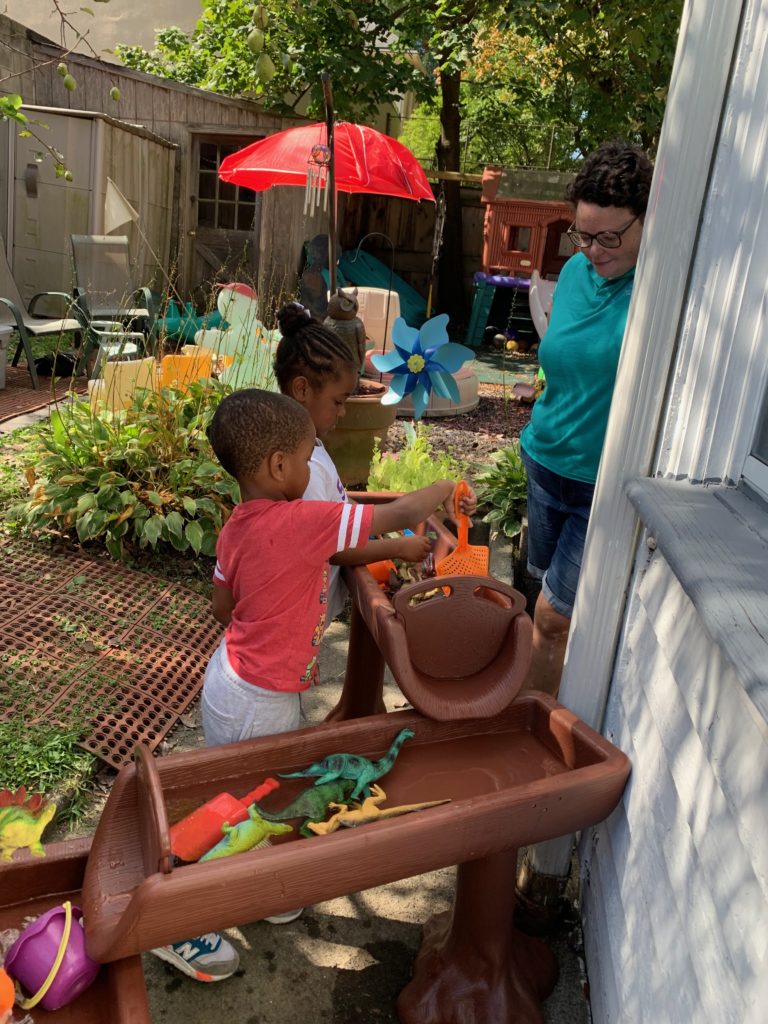
Children from Ms. Cynthia’s Munchkin Romper Room create a dinosaur washing station after learning about paleontology.

Children have fun with hands-on science at a Pre-K Family Day at the Academy.
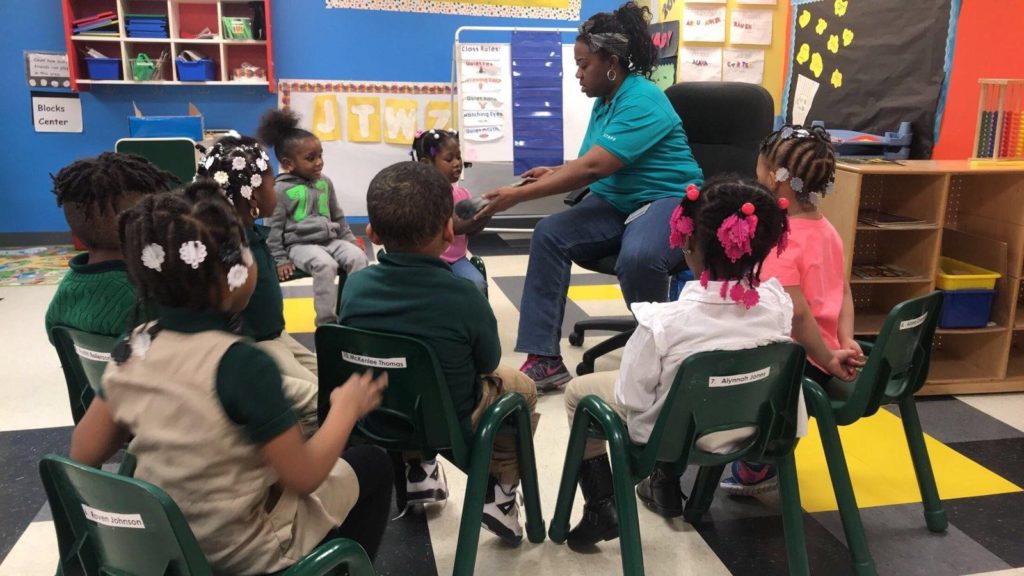
Students touch a turtle shell while learning about animal armor.
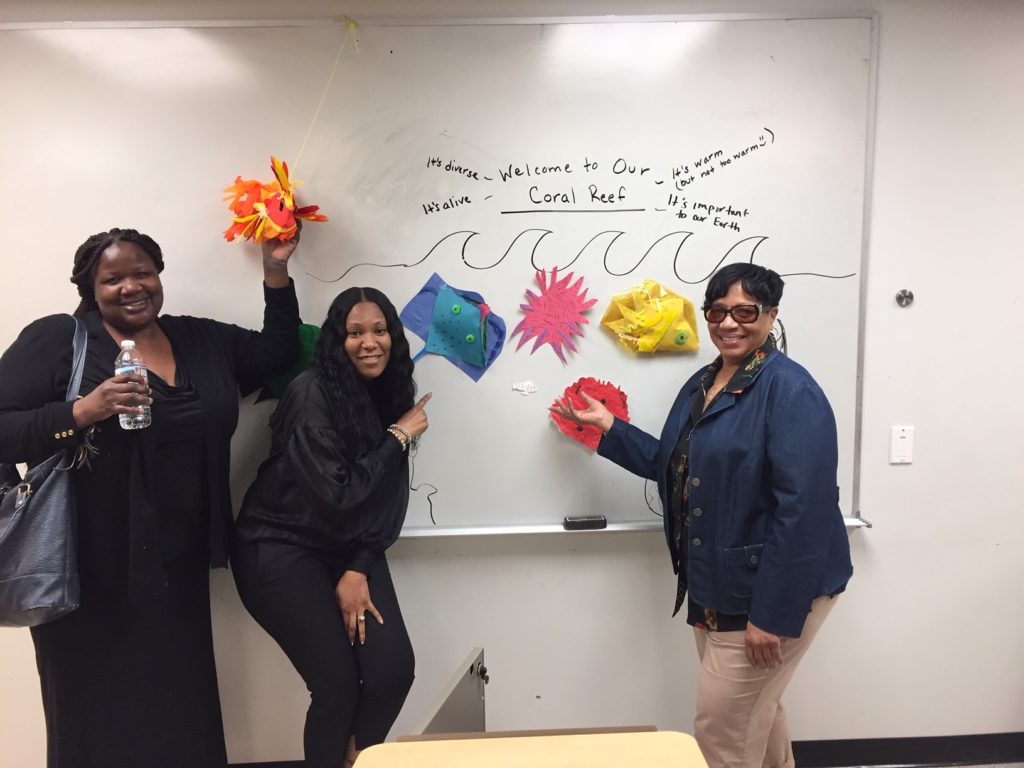
Teachers at a Science and Literacy for Success workshop show off their creations for a DIY coral reef.
The Academy, with its educational and community offerings for people of all ages, has been a logical and successful partner to Drexel in its community learning programs.
Notably, in 2016 Drexel and its partners, including the Academy, earned a $30 million Department of Education grant known as the Promise Neighborhood program. The grant is used to improve the educational outcomes of children and their families residing in the federally designated Promise Zone, a 2-mile area of 36,000 primarily low-income inhabitants in a swath of West Philadelphia.
Also in 2016, the Academy created the Science and Literacy for Success (SLFS) program, with significant funding from the William Penn Foundation, to enhance the quality of STEM and literacy instruction in classrooms in under-resourced areas — and became the first program in Philadelphia to use a STEM-based curriculum in early childhood centers. Over half of the children benefitting from that program live and learn in the Promise Zone.
In 2020, the Academy created Center for STEAM Equity (STEM with an “A” for “art”) as an umbrella organization for the Academy’s science, technology, engineering, math and art programs. This includes the SLFS program and also the Academy’s Women In Natural Sciences (WINS) program, a long-standing Academy program that has introduced hundreds of high school girls to STEM experiences, research and futures since 1982. WINS has received the White House’s prestigious Presidential Award for Excellence in Science, Mathematics and Engineering Mentoring Program — the highest United States accolade for STEM mentoring. WINS recently forged a new partnership with the School of Education and the College of Engineering to administer a grant from the National Science Foundation to introduce engineering and mentor implicit-bias training into the program.
Through both of those programs, now managed and housed in one place with a shared infrastructure, the Academy has strengthened its impact in instilling a love of science in young learners and diverse audiences across their lifespans. That, in turn, opens up a host of opportunities for those leaners to access science and, later on, potentially become part of a more diverse, educated and equitable STEAM workforce.
#4 Seed Fund for Richer Museum Experiences
In the spring of 2021, the Academy established a Museum Innovation Fund (MIF) that provides seed grants to Drexel faculty and students who develop prototypes of new museum experiences. The initiative combines coursework related to museum learning, design and aesthetics with hands-on challenges for students aimed at modernizing and refreshing storytelling in the museum setting.
The inaugural round of funding has already yielded interesting course designs and museum projects. In one course, for example, students can pursue climate advocacy and public awareness through filmmaking. As a final project, the class will develop an audience survey to understand how approaches to filmmaking affect audience perceptions on climate change issues. The course will culminate in the curation and organization of a one-day film festival for the public focused on climate change solutions, held at the Academy in November.
In other courses, product design students are using mobile interactive virtual reality to bring dioramas to life with sounds. And art students will create sculptures and drawings of specimens under the mentorship of their professors and a scientific illustrator, the Academy’s Curatorial Assistant/Imaging Specialist Kyle Luckenbill. At the end of the term, the students’ work will be shared with museum visitors at the Academy.
The second round of funding opens in October and is open to all academic units with a vision for the future of museum engagement.
#5 A One-Stop Shop for Environmental Collaboration
Launched this past spring, The Environmental Collaboratory is a new way for Drexel and the Academy to promote interdisciplinary scholarship with internal and external community participation, with the goal of solving problems related to climate change and other environmental issues. The Environmental Collaboratory will employ the two institutions’ expertise in environmental science, law, health, policy, humanities and engineering. Plus, The Environmental Collaboratory will be an internal hub for interested faculty, professional staff and students to connect on these issues, and will build external partnerships within the community through research and programs.
Currently, there is an ongoing search for the inaugural executive director of The Environmental Collaboratory, who should be appointed in the fall and likely start in 2022.
#6 Count on the Specimens
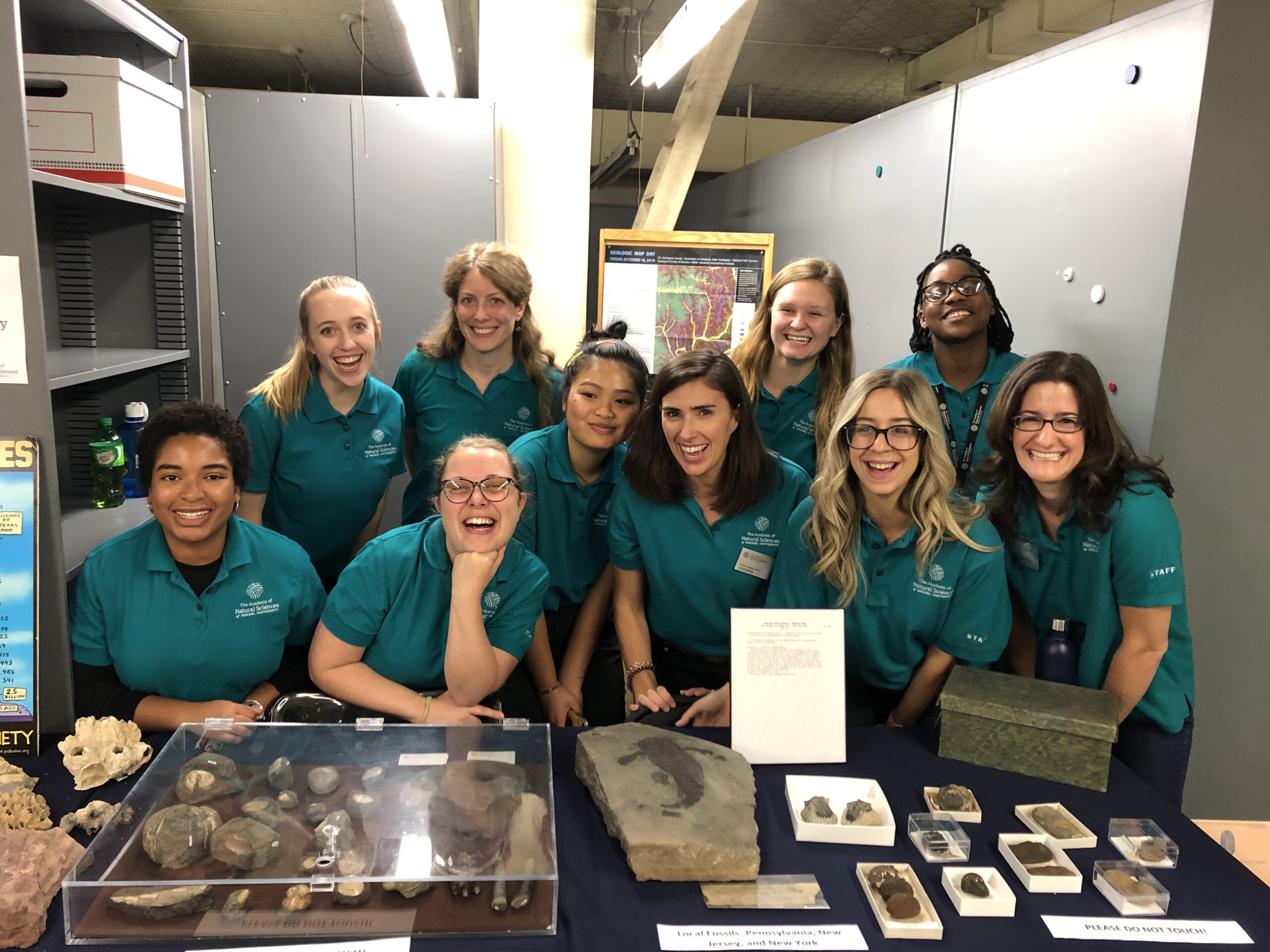
The Academy’s specimen collections are as vast as they are historic — and these days, they’re bigger than ever.
Over the past decade, the Academy fostered a recount and expansion of all of the plants, animals, fossils and shells (among many, many other species) that increased the total number of specimens to an estimated 19.2 million specimens, up from about 18 million.
That updated number doesn’t include the uncounted millions of microscopic diatoms, but it does include a “backlog” of various specimens that have been accessioned but not cataloged into Academy databases (yet), according to Mark Sabaj, PhD, interim curator of fishes.
Since 2011, the Academy has received $4 million in funding from the National Science Foundation, and also received support from the Hattersley Family Foundation Collections Care Upgrade Fund, to digitize and publish the collections online.
“Well-curated natural history specimens physically document life on Earth in space and time,” said Sabaj. “They are essential for species and other taxa to be fully conceived, formally named and firmly supported or refuted from one generation to the next. As such, they secure taxonomy to the scientific method by allowing one to iteratively test and refine hypotheses of phylogenetic relatedness. Phylogenetics tells us which lineages are evolutionarily old, related or unique. All of those data inform conservation policies and practices for imperiled species. For 99.9% of all species that have existed on Earth, natural history museums around the world preserve the only physical record of their existence!”
One of the oldest collections has also undergone a 21st century revitalization. The Invertebrate Paleontology Department is home to the oldest invertebrate paleontology collection of its kind in North America; it dates back to when the Academy opened in 1812 and features items collected by one of the founders, Thomas Say, and his wife Lucy Way Sistare Say. The collection had grown to over one million specimens of fossilized clam and snail shells, insects, trilobites, ammonites, for example, but remained stagnant for the past four decades in the absence of a curator to oversee it, or even interns and visitors to learn from and engage with it. But that’s all changed in the past few years.
In 2017, the Academy and Drexel partnered to hire Jocelyn Sessa, PhD, as curator for Invertebrate Paleontology and an assistant professor in the BEES department to update and build up the collection and its staff. The Academy also partnered with Drexel’s Louis Stokes Alliance for Minority Participation program, an NSF-funded initiative to increase the number of underrepresented minority STEM majors, and hired two Drexel co-ops from the BEES department who, over the course of their internship, helped retrieve a donation of 540-million-year-old fossils from Lancaster, Pennsylvania, and inventoried the entire collection.
“The revitalization of the collection is focused on photographing and gathering information on marine invertebrate fossil specimens from the last 66 million years, a time when several significant climatic perturbations occurred,” said Sessa. “These fossils are extremely valuable as a record of the biotic responses to those changes, which can help to provide an understanding of how modern marine invertebrate communities are affected by global climate change.”
#7 Climate Year and the Future
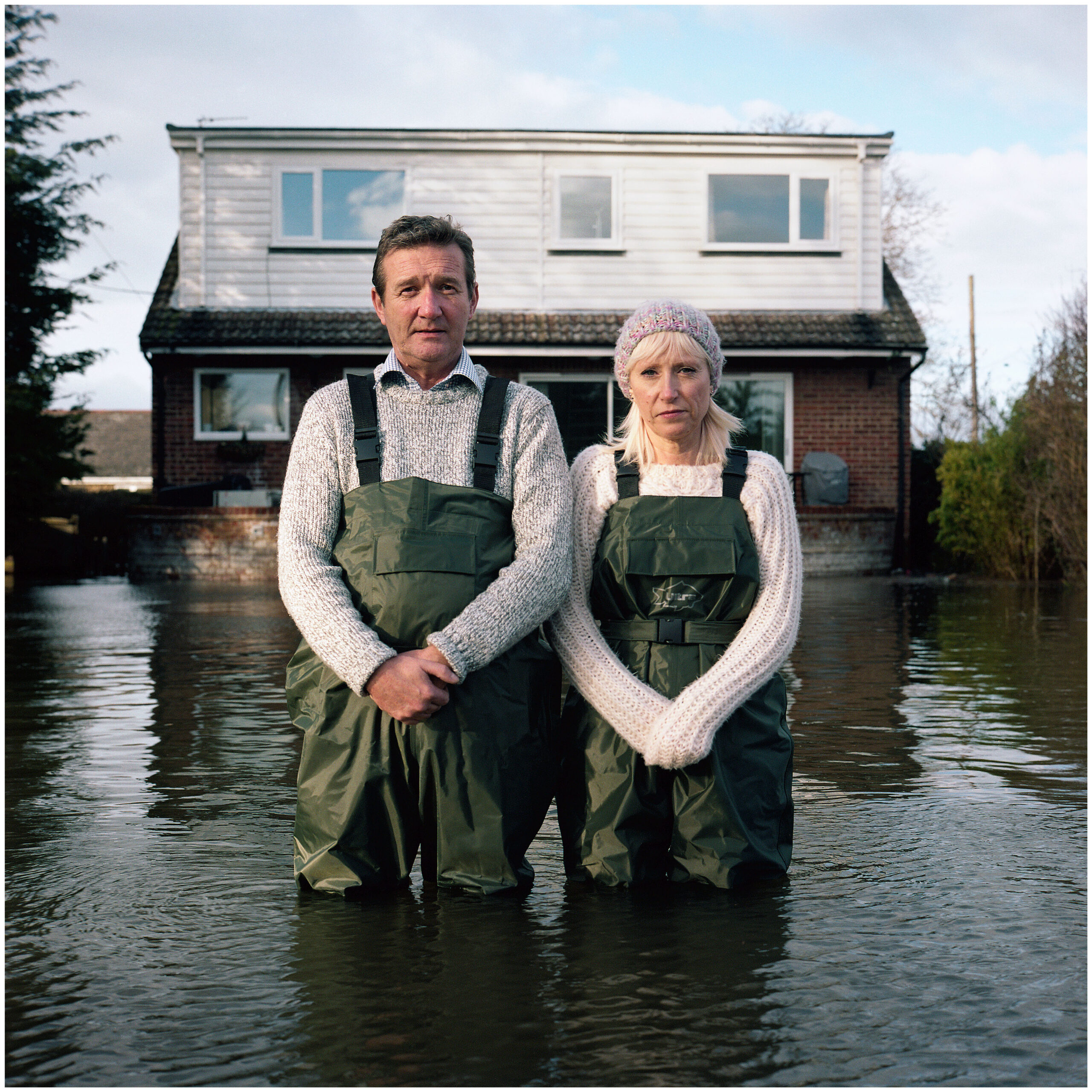
Jeff and Tracey Waters, Staines-upon-Thames, Surrey, UK, February 2014.” Courtesy of Gideon Mendel.
With the potential for looming environmental crises to disrupt both human and natural ecosystems worldwide, it only makes sense for a renowned scientific institution and museum and a research university to work together on climate resiliency.
In 2021, Drexel and the Academy created a 12-month initiative, Climate Year, to examine, create and support climate and sustainability actions from within. Drexel faculty are encouraged to create courses on climate change and provide ways for students to become involved with environmental decisions and institutional sustainability.
The Academy’s programming has also shifted to support Climate Year. The Academy Town Square public discussions, originally started in 2004, featured Drexel faculty experts and prominent thought leaders and their findings on climate change, and the Academy’s Gideon Mendel: Drowning World exhibit featured photographic evidence of climate change and flooding throughout the world.
Outside of the campus and museum, Drexel and the Academy partnered with the City of Philadelphia and other local organizations to develop ways to make the Philadelphia region more climate resilient.
And after Climate Year comes Water Year, for which the Academy is planning exhibits that promote the rising role of water in today’s world, starting this Nov. 13 with Invisible World of Water.
#8 Testing the Water
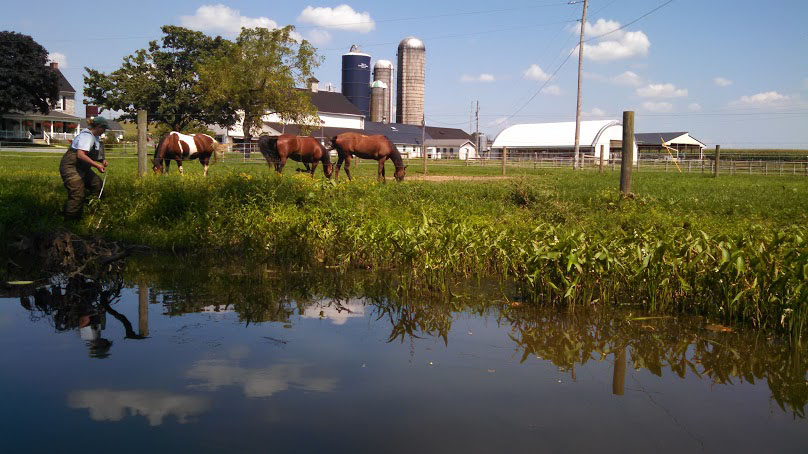
Farm fertilizers and animal waste flowing into streams can cause problems in the Delaware River Watershed. Photo credit ANS.
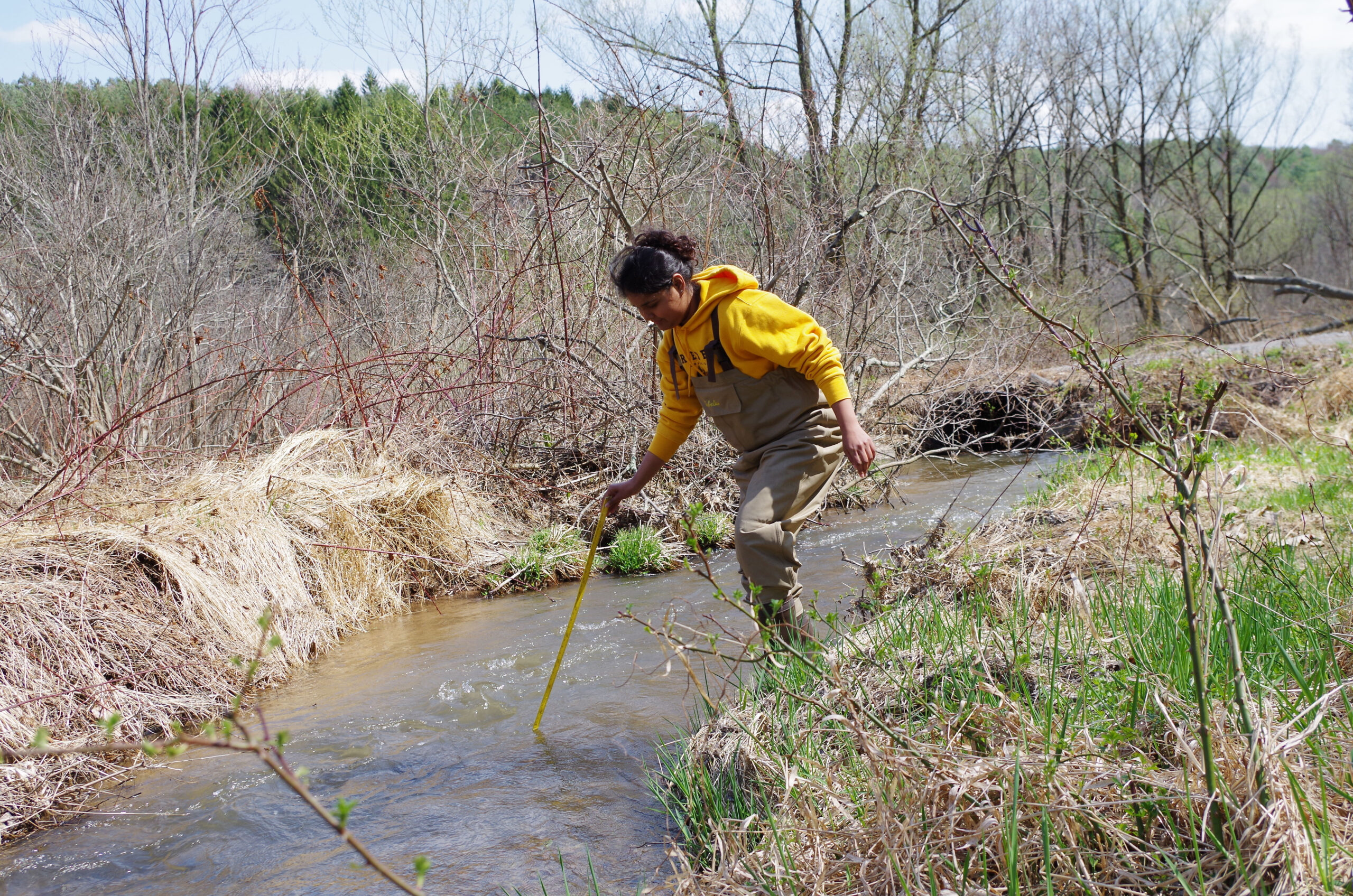
Drexel University co-op student Nikita Shah evaluates habitat conditions of a stream in the Poconos for potential sampling as part of the Delaware. Photo credit Meg O’Donnell/ANS.
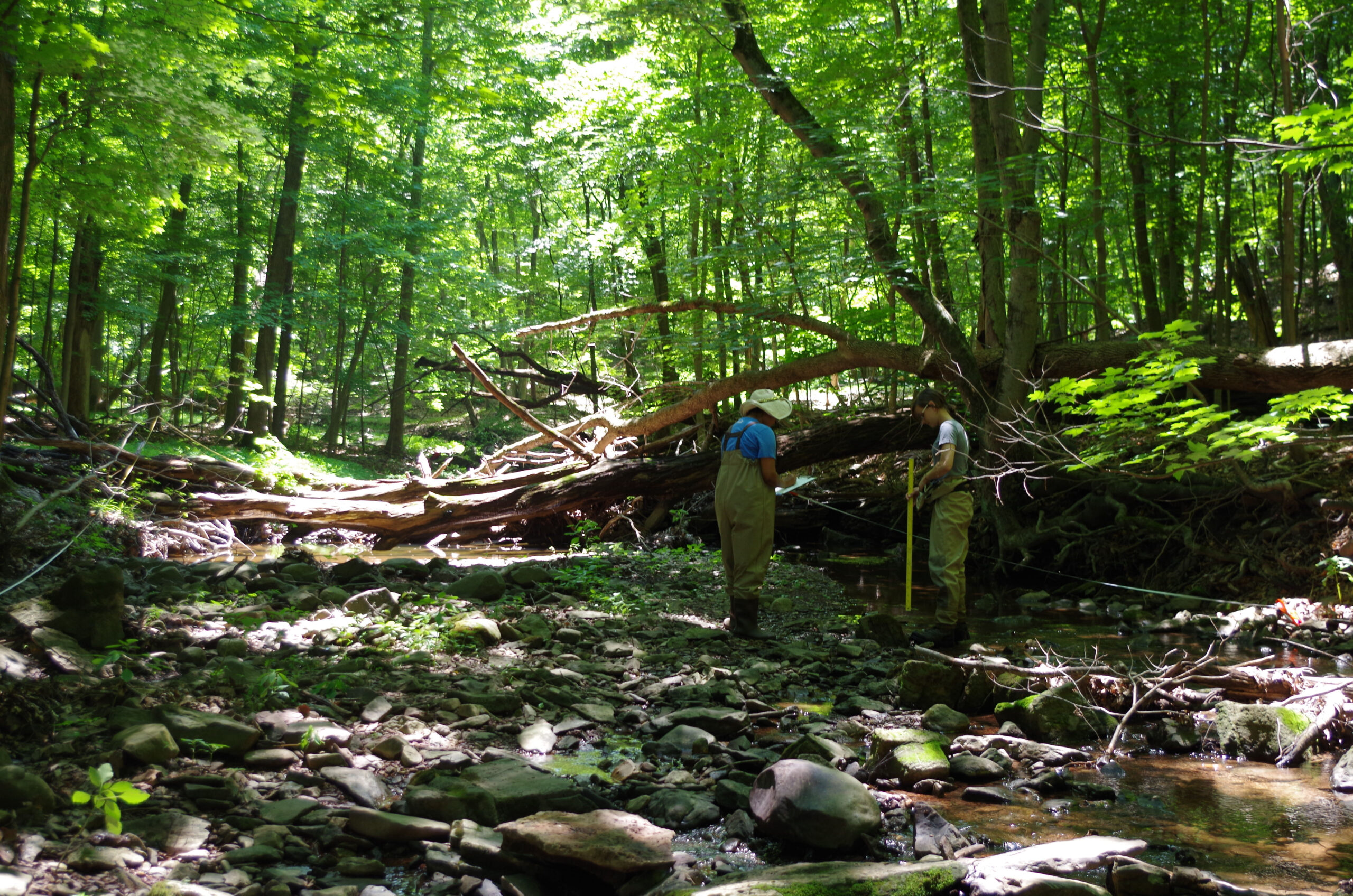
Academy scientists sample algae on Cobbs Creek near Bethlehem, Pennsylvania, as part of the Delaware River Watershed Initiative. Photo credit Tess Hooper.

Academy scientists electrofish to capture and then release fish they are monitoring in Cobbs Creek. Photo credit Sylvan Klein.
Both the Academy and Drexel are committed to supporting research for the public good, and the Academy’s leadership within the Delaware River Watershed Initiative (DRWI) is a prime example of this. Now in its eighth year and funded through a series of grants from the William Penn Foundation, the initiative works to improve the ecological health of eight “clusters” within the Delaware River Basin, from which more than 15 million people get their drinking water.
As co-leader of the DRWI, the Academy helps to coordinate a program that involves over 50 other watershed organizations. In that role, the Academy performs research projects, monitoring, assessment and planning to support improving and/or sustaining conditions in water quality. By assessing stream and river health and the area’s biodiversity, the Academy is a key partner in working to ensure that the water we drink is healthy and sustainable.
“The Delaware River Watershed Initiative has been and continues to be one of our most important projects,” said the Academy’s Senior Director for Environmental Initiatives Roland Wall. “With the commitment of the William Penn Foundation and our many other partners, this program has demonstrated the importance of linking together science, community engagement and conservation practice.”
#9 The First Affinity Group of its Kind
In 2020, Drexel and the Academy launched the first affinity group for friends of Drexel and the Academy to come together to network, volunteer and participate in events and programming related to sustainability. The Environmental and Sustainability Network (ESN) has hosted two virtual panels since launching during the COVID-19 pandemic: a kick-off event in July 2020 held discussions with the students and professional staff behind the Drexel Climate + Sustainability Initiative, and a second event held that November featured a “Sustainability at Work” panel discussion with Drexel alumni and Academy members integrating sustainability into their professional and personal lives. As the group evolves, members will have the opportunity to attend networking events, mentor students interested in sustainability and environmental careers, and lead workshops centered on sustainability.
#10 A Stable Future at All Costs
The partnership between the Academy and Drexel, with the Academy a nonprofit subsidiary of Drexel, has weathered 10 years of changes, updates and even a pandemic. The affiliation allows both institutions access to grants and funding that otherwise would not have been available, and that has contributed to the continued success of academic and research partnerships.
Over the years, the Academy’s endowment grew about 57%. Through The Campaign for Drexel, the University’s fundraising campaign that launched in 2017 with a $750 million fundraising goal, the Academy has raised over $61.7 million — a significant portion of funding came from William Penn Foundation for the Delaware River Watershed Initiative, in which the Academy figured prominently — to support initiatives. Those include (but are not limited to) research, co-ops and internships, the funding of research chairs and fellows, and improvements to collections and spaces, including some previously mentioned (Library and Archives, Dietrich Gallery, Center for STEAM Equity and SLFS).
A Decade of Progress
- 25 | Estimated number of BEES students on co-op at the Academy each spring/summer co-op cycle.
- ~25% | Estimated percentage of the total College of Arts and Sciences research expenditures comprised of grants and contracts for BEES faculty.
- 27 | Number of co-ops at the Academy in the 2021 spring/summer cohort — a tie for the greatest number of co-ops in a cohort.
- 45% | Percent increase of actively engaged Academy members in the 10 years since the Drexel affiliation started.
- 57% | Percent growth of the Academy’s endowment between 2011 and 2021.
- ~60: | Number of undergraduate and graduate students the Academy has hosted for 93 rotations in a variety of capacities, including departmental interns, Drexel STAR Scholars undergraduate research program, federal work-study, student employees and volunteers.
- 65 | Number of countries (plus two territories) on every continent plus Antarctica in which the Academy’s Center for Systematic Biology and Evolution’s scientists and emeritus curators have performed field and/or museum work in, and/or collaborated with and advised students/colleagues.
- ~70 | Estimated number of organizations with which the Academy’s Patrick Center for Environmental Research collaborates.
- 178 | Total enrollment in the BEES program in fall 2021, up from 25 students in fall 2012.
- 307 | Number of individual undergraduates who have worked with the Academy in some capacity since 2011.
- 360 | Number of Drexel co-op positions hired at the Academy since October 2011.
- 2016 | Year in which BEES students had more fellowships/scholarships than those of any other department at Drexel.
- 2016: year in which the Academy was named #2 for Top 30 Natural Science Museums by Best College Reviews. #1 and #3 spots were taken by Yale and Harvard, respectively.
- ~2,500: estimated number of early childhood providers and young learners who engaged with the Academy’s community outreach programs in the past decade.
- 50–100: number of community organizations, depending on the year, with which the Academy partners annually.
- 2 million: number of new specimens in the Academy’s collection, from 18 million before the partnership to 19.2 million today.
When you support the Academy of Natural Sciences, you are contributing to scientific discovery and strengthening Drexel’s partnership with the nation’s oldest natural history museum.


